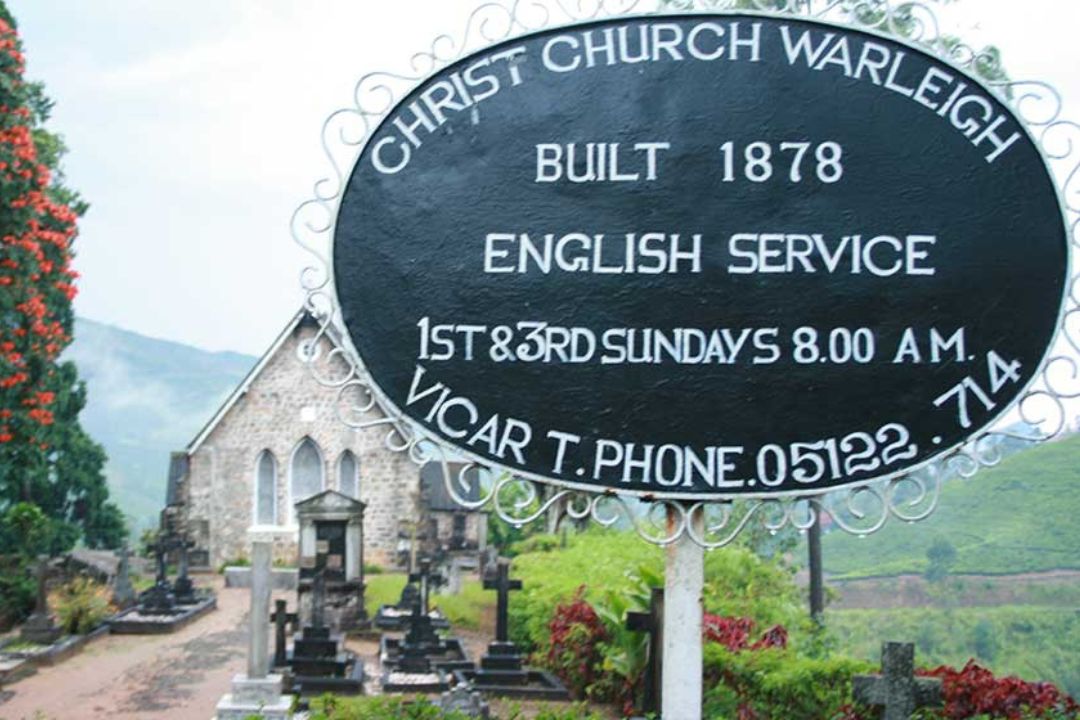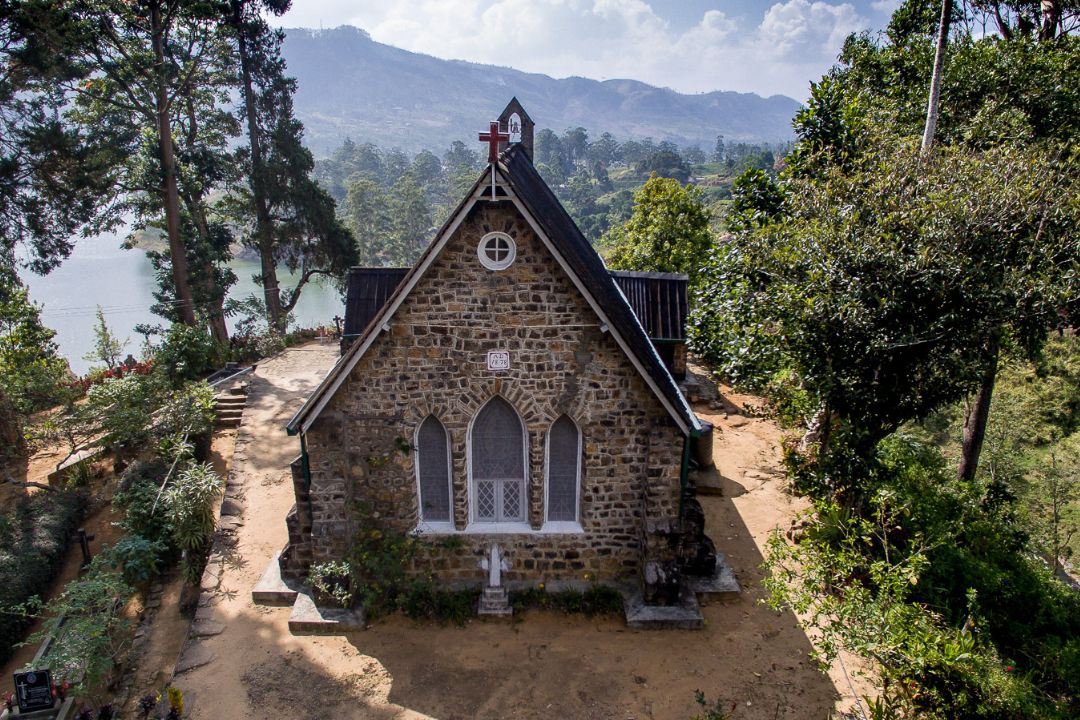Within Sri Lanka’s Dickoya Tea Planting District, WANARAJAH is one of the biggest tea plantations. One of the most notable structures on its Warleigh Division is the 1878 church known as the Warleigh Church, which was given as a gift by William Scot, an Englishman.
In the 19th century, the British built the Anglican Church Christ Church Warleigh in Sri Lanka. It is administered by the Church of Ceylon. The church is one of the most famous and ancient Anglican churches in Sri Lanka and is a well-liked tourist destination. It is situated in the Central Province of Sri Lanka, in Dickoya in the Nuwara Eliya District, along the Hatton-Norwood route and is conveniently accessible by car and passes through the Warleigh Division. On either side of the chapel are the tea farms and the Castlereigh Reservoir.
CHRIST CHURCH WARLEIGH DICKOYA
William Scott, an Englishman, gifted the chapel’s solid granite stones, which were used in its construction in 1878, when the country was still a British colony. In July 1879, the church received a Bible printed in the 1860s from the Warboys Parish priest, Rev.Charles Hill. The Bible is still kept there. It is believed that Sir George William Robert Campbell, who came to Ceylon in 1866, is interred in the cemetery. He was the first Inspector General of the Ceylon Police during British colonialism. The church was built utilizing an archaic British church plan. The walls of the church are composed of granite stones. The interior of the church includes a 140-year-old Bible, an armchair, a wooden pulpit, and an antique pipe organ, originally imported from England.
Nineteenth-century stained glass windows showcase dazzling images of Jesus Christ in the Gothic style. Floral patterns adorn a baptismal font made of porcelain. The chapel floor was covered with imported floral tiles from England. The gravestones of English colonial tea growers are located in a cemetery close to the chapel. The beautiful porcelain baptismal structure with flower motifs is located next to the organ. The floor is covered in exquisite flower tiles that were brought in from England, and the granite walls are embellished with copper plates that feature Bible verses.


The church’s grounds are dotted with stone and marble grave markers of all sizes and shapes, offering photographers a visual feast against the backdrop of Castlereigh Reservoir. Most of the grave markers are neatly maintained, free of weeds, and surrounded by flowering shrubs. It gives the place a certain beauty and acts as a memorial to the people who are buried there. The actual remains of British colonial planters are marked by these grave markers in the cemetery next to the church, and they have been preserved and safe guarded. While wandering the cemetery, we noticed a few eye-catching inscriptions that would probably bring back memories for any visiting descendants. The tall, elaborately carved tombstones with inscriptions on them stand tall against the sky. Some of these grave markers were bought directly from England, while others were bought from Colombo’s funeral homes.
We circled around these grave markers in the untidy churchyard back, looking closely, and eventually found the marker for a British planter named Michael Turnbull (1921–1977), who retired to Britain. He had loved the hill country so much that he had sent for his ashes to be interred here. The keeper told us there was no more room because the cemetery only had a small amount of space.
Each month on the first and third Sundays, the church hosts services in English. The caretaker on duty is always available to help visitors and worshippers. I noticed some readable tombstones which read:
Born on March 25, 1861, and died on August 17, 1904, at the age of 43, William Reeve Thadam was the second son of the late Ralph Thadam P.W.D. Ceylon.
It also seems that someone passed away at the young age of two:
“IAN BROOKE ANDERSON DIED 7 MARCH 1898; BORN 21 MAY 1896”
I hope their souls rest in peace, whoever they were.
Around Warleigh Church, there are hundreds of these incredibly striking monuments, some honouring very notable figures from the era, such as the first British Inspector General of Ceylon.
The Church was constructed in a stunning setting with stunning views of the Castlereigh Reservoir and tea plantations.
I hope this article will interest you and may decide to visit this memorable site.